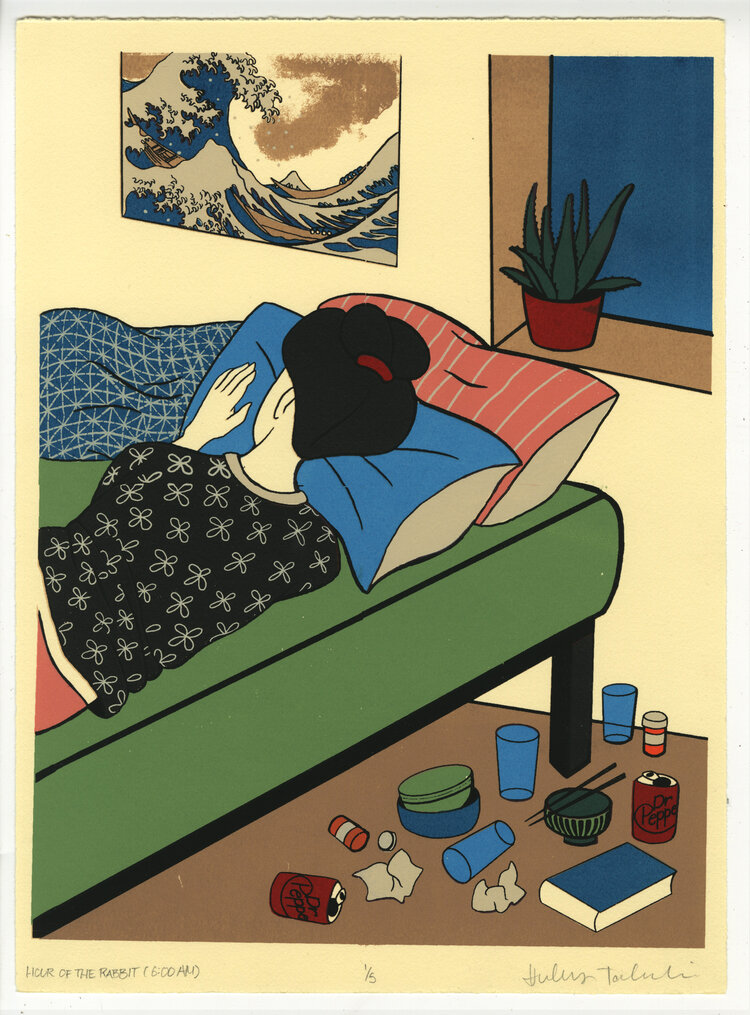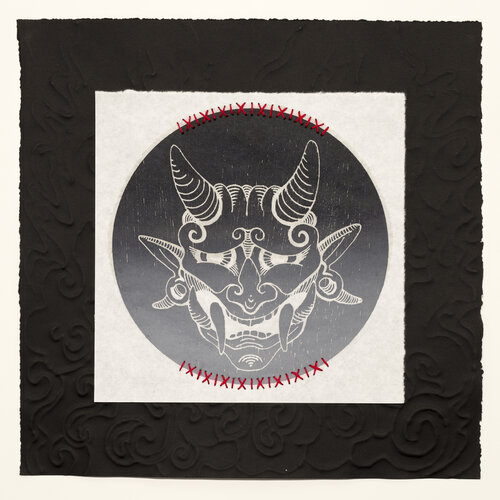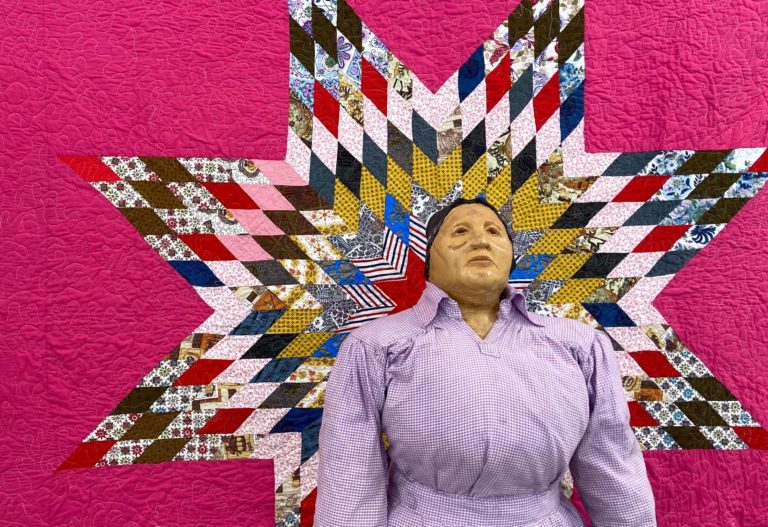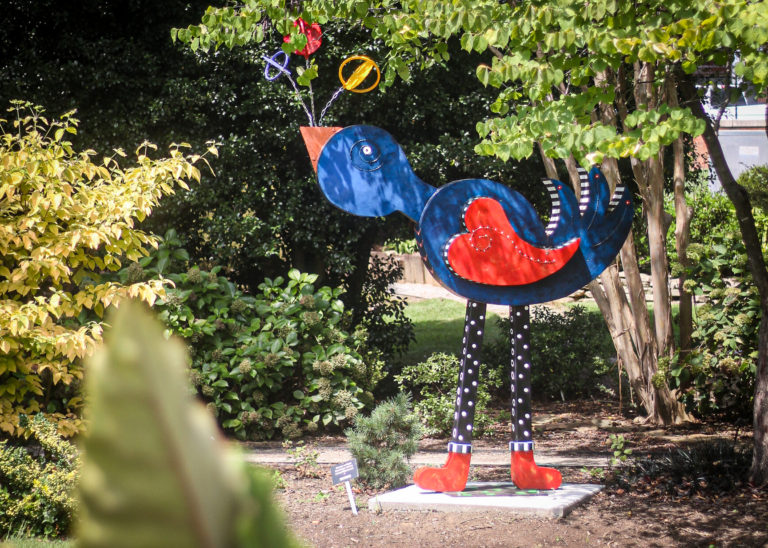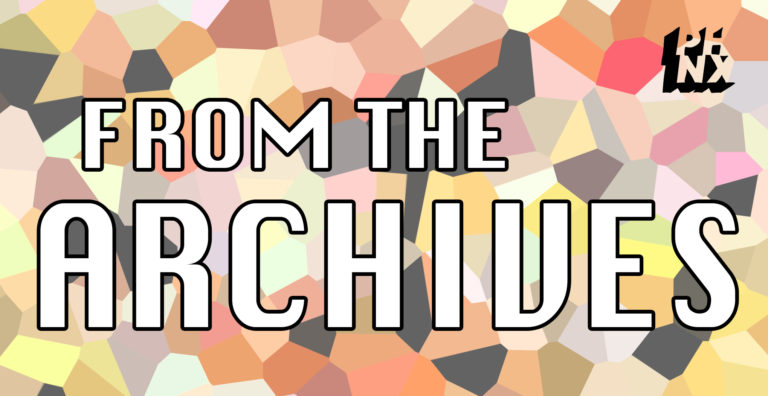Written by Clint Liles
Edited by Sadie Kimbrough
Haley Takahashi, an award-winning artist and graduate student here at the University of Tennessee offers representation of being a Japanese American and the duality that identity brings in present-day America. Her work centers around family and identity through a blend of modern printmaking techniques and traditional Japanese imagery. In doing so Takahashi creates profound and memorable works of art that leave the audience grappling with her message.
Takahashi told me that art has always been present in her life, even as a little girl.
“I have always done art. My dad was an art teacher and it was always a part of my life from the very beginning. I’ve never not done some sort of art at some point in my life.”
However, she highlights that becoming an artist was not her original plan.
“There have been multiple levels of ‘this is just a hobby’ or ‘this is an actual thing I want to pursue.’ In my undergrad I went in as an Art History major because I had a lot of people and society in general telling me that getting an art degree wasn’t worth anything. I was so scared that I was just like, ‘Okay, if I want to do anything, I want to do something art,’ so I majored in Art History.”
In many ways, her decision to pursue art further was a journey aided by supportive professors and friends who challenged her.
“As an art history student, I was only allowed to take a very small amount of art classes. At the time I was a studio art minor and went in, had a fantastic time and the professor approached me and said, ‘Why are you an art history major? You’re an artist, obviously you have always been an artist.’ I was like, ‘You’re right, what’s the point in trying to hide it?’ That was a good ‘aha’ moment when I allowed myself to say, ‘Okay I’m going to do art, I’m going to continue art, I’m going to go into grad school for art.’”
Takahashi notes that self-identity plays a major role in her work.
"I’m Japanese American and half white. I have this really interesting socialization and existence within American society. I think creating something speaking back to that is really important.”
Takahashi also opened up to me about how her family history plays a major role in her work as well.
“I’ve spent a lot of time researching and focusing on my dad’s side, which is my Japanese side, because there’s a lot of trauma to unpack within that. So, there’s Japanese internment and then not being white in America and what does that look like? What does that mean? So, when I do work about it, it’s kind of me working through those emotions and doing research through that end of it. And as of late I’ve been thinking more about how to contextualize my upbringing being biracial because it’s very subjective. Not every person who had one Asian parent and one white parent has the same upbringing. So, how can my family and my history inform my work?”
She also notes that red is a common motif that she finds throughout several of her works.
“At first these motifs were a little subconscious, but as I’ve thought about it a little bit more the red gradient for me can mean so many things. Red is passionate, angry, and bright, the idea of it fading into nothing is metaphorical and poetic. Red is so culturally Japanese and that’s something I’m always grappling with; my identity as a Japanese American.”
A piece that really stuck out to me was her work, “This Land is Soaked in Blood.” Haley offered more background on this piece and her intentions behind the work.
“I put it on this big kimono that sweeps the floor and has that red gradient that’s almost soaking up this anger. I was thinking about how if we don’t teach history and we don’t learn about it deeper than what we are taught in schools, then it’s bound to repeat itself.”
A message could be seen even while she worked on the piece.
“I made that right at the time when the government had placed a ban on Muslim people travelling or immigrating to the US and when people are being detained at the border. And it was just like, how can I hit the audience with the face of the history that this is nothing new? I’m still fighting to get that same energy back into my work now.”
For several reasons this piece also held personal resonance with her as she noted of her own family history in relation to it.
“My family on my dad’s side was sent to internment camps in the 1940’s and so much of my family’s culture was just taken away. It was not okay to be different or Japanese, you had to conform and I resent that. I’ve put a lot of anger towards that, that I never got to learn Japanese, we don’t have our samurai armor, my family had to sell their house and all these very salty and angry feelings. So, I printed that fabric with the executive order that Japanese people were going to be taken from their homes and taken to these camps.”
Takahashi shared with me that she’s still creating and experimenting with new things.
“I have been experimenting with pop-ups and pop-up books, so that’s a really exciting forefront that’s playing the line between print and 2D but also 3D. I really want to get into installation like lantern building and kimono making.”
Takahashi’s work is an acute statement to her Japanese American identity and the value of her family’s legacy. In doing so, her work creates a powerful blend of contemporary and traditional techniques that offers stunning pieces for her audience.
